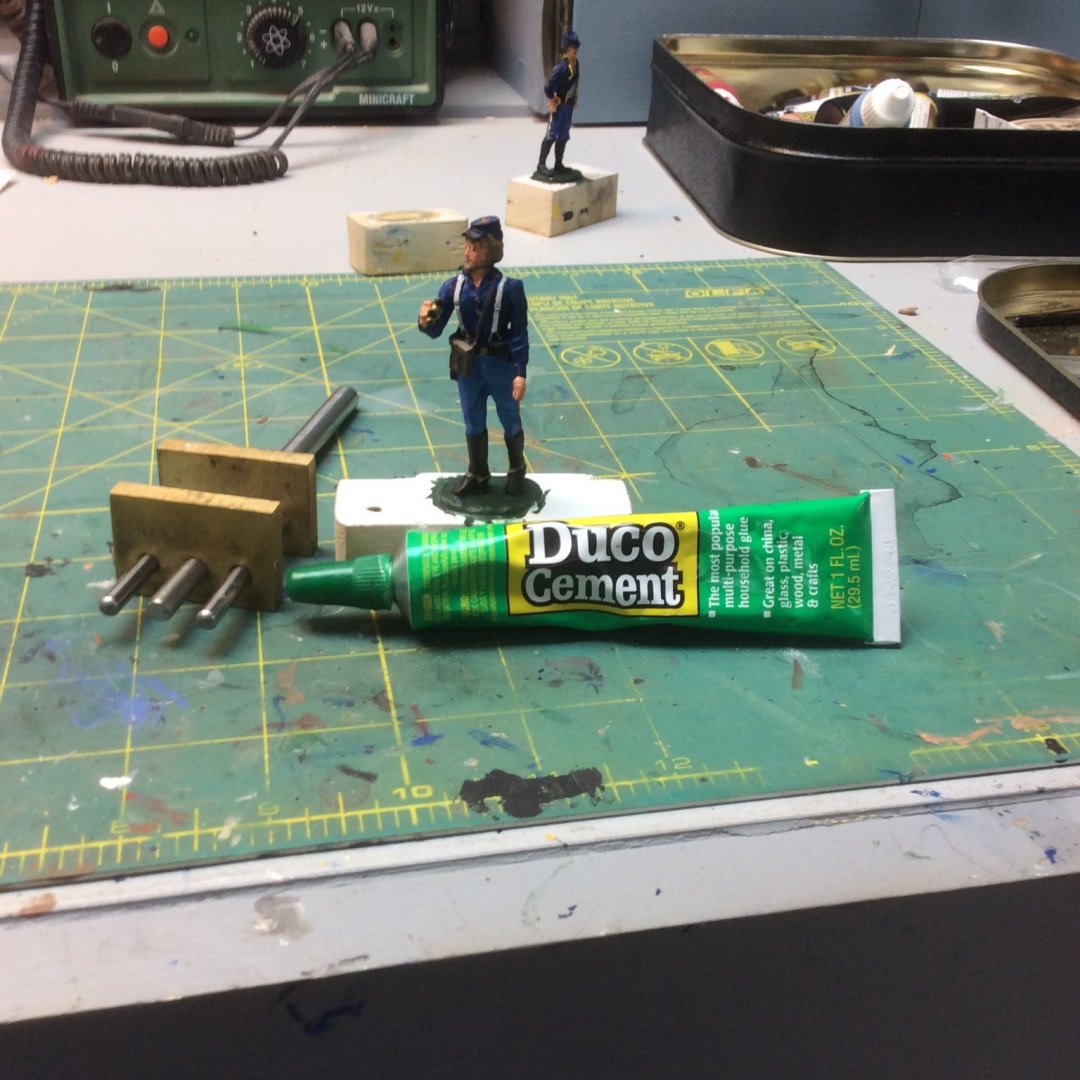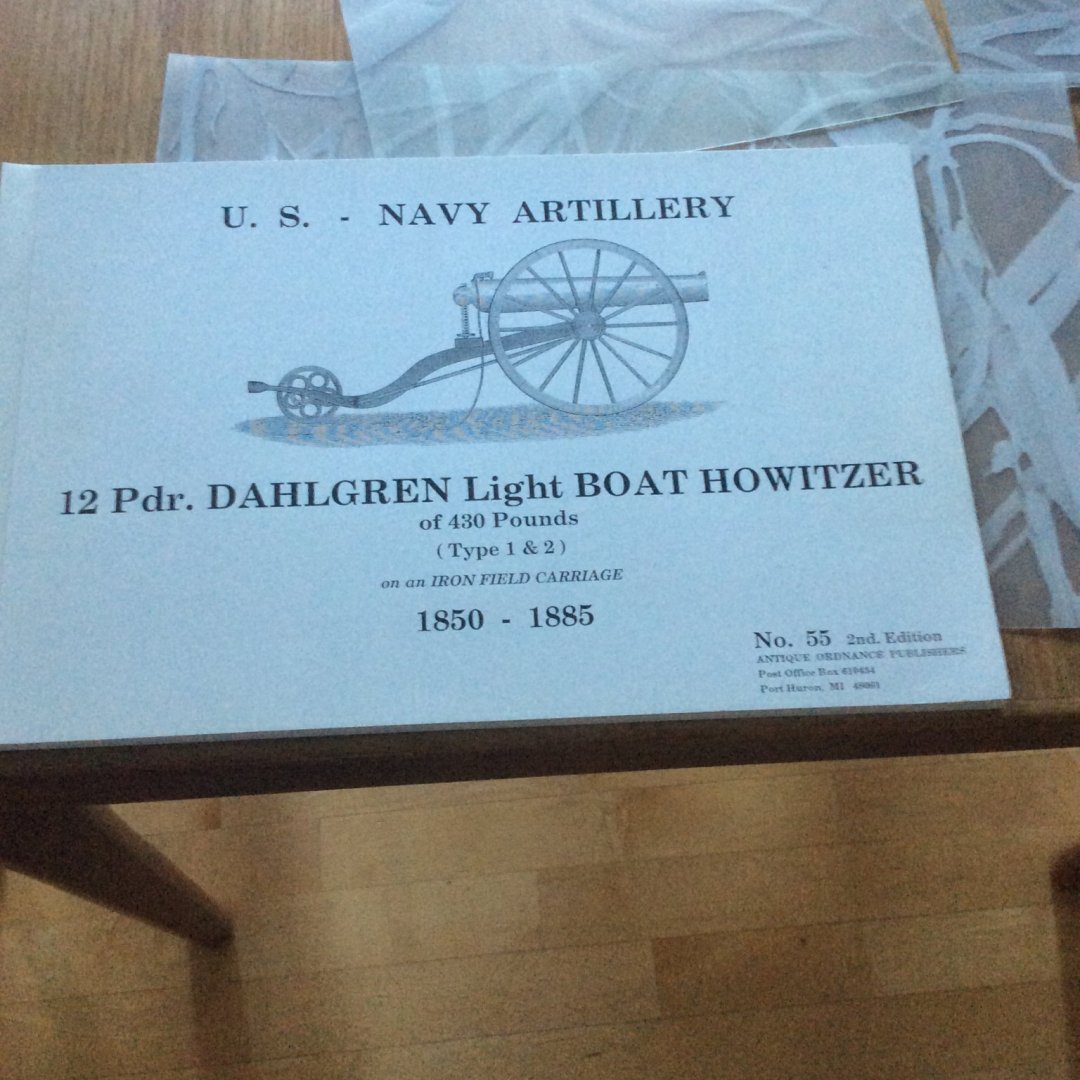
Roger Pellett
NRG Member-
Posts
4,519 -
Joined
-
Last visited
Content Type
Profiles
Forums
Gallery
Events
Everything posted by Roger Pellett
-
Amazing project!! If my mental metric conversion math is correct, the real thing would have had a bore of 32in. That’s twice the bore of the main armament of an Iowa Class Battleship. Am I correct? Was this actually built and used? Railroad guns are fascinating. The museum at the Washington Navy Yard used to have one of the ones built for service in France during World War I. It was built around a Battleship gun- 16 or 14in. If a kit for one of the WW I guns was available I would be tempted. Roger
-
At least 10 years ago there was an article in the Nautical Research Journal about the construction of a model of the gunboat USS Bennington. I believe that there was a connection to the San Diego Maritime Museum. The author formed cowl ventilators by electroplating a metal plug that he had cast. The plug was cast from a metal used by gunsmiths to cast impressions of gun cylinders. This metal (maybe called Cerro?) has a melting point close to the boiling point of water. After electroplating, the plug was immersed in boiling water leaving only the electroplated shell. Roger
-
I agree, John. That’s a lot of money for metal, especially as I believe that this is a relatively new kit. A better choice for the gun barrels today would be cast resin. BTW, if you PM me your deadeye bill of material I might be able to help you out. Roger
-
I hesitate to give advice to an accomplished modeler, but here’s my setup for painting figures. The Duco cement is the old model airplane cement, Maybe Ambroid in the UK? It easily separates with a single edged razor blade, although my figures are metal. The little hand vice is handy for positioning the figure for hard to get to areas. Your guy looks great. Nice work. Roger
-
Micromark cutoff saw?
Roger Pellett replied to Brewerpaul's topic in Modeling tools and Workshop Equipment
I’d save the $50, approx towards eventual purchase of a Byrnes saw. Roger -
The best reference that I know of is an NRJ article by Eric Ronnberg about historic paint colors. An edited version is included in the NRG published Shop Notes (I think Volume II) and was at one time included on the NRG website. You can also occasionally find references in old specifications. For example, an 18th Century longboat specification required the interior to be painted “drab.” Looking up drab color on the Internet I found it to be a mixture of burnt umber and white lead that I mixed from acrylic artists colors. Roger
-
At one time, Bluejacket, I think, produced a true plank on frame kit for the Schooner Yacht America, and one of the 1850 era US Revenue Cutters. I don’t know if either of these are still available. Roger
-
Latex wall paints?
Roger Pellett replied to Brewerpaul's topic in Painting, finishing and weathering products and techniques
Rather than using wall paint, custom colors can be mixed from tubes of acrylic artist’s colors. I have had good luck mixing these pigments with artist’s matt medium. For use in my airbrush they are thinned with water. I do not pretend to understand the intricacies of using a color wheel. Instead, I mix them by eye. For old colors like “drab” and “straw” formulae can be found on the Internet. Roger -
Drilling holes with crisp edges in wood
Roger Pellett replied to laps's topic in Modeling tools and Workshop Equipment
Brass tubing is the modelmakers friend. Short pieces can be used to line drilled holes to produce a clean sharp edge where required. It can also be used to make a miniature hole saw for cutting sharp edged holes in wood. Roger -
Hull building
Roger Pellett replied to mauryd824's topic in Building, Framing, Planking and plating a ships hull and deck
I’m not familiar with the vessel, but if it is one of the World War II era tugs it would have had a steel plated hull. If that’s the case, I would fill in the areas between the bulkheads with wood blocks- basswood or pine and then shape the hull. I would then plate it like the real thing. Roger -
Over here “across the pond” Mystic Seaport Museum hosted a large exhibition of Turner’s work in it’s new art gallery. It was the only American institution selected for this exhibition. My wife and I stopped to see it on our way to the NRG Conference. Temerarie not included but lots of other works demonstrating Turner’s amazing abilities. Roger
- 11 replies
-
By the time that your grand daughter is a young adult and able to fully appreciate this beautiful model, who knows what technology will be available to let her see below decks. A very inexpensive endoscope? Roger
-
Jerry, Here is a picture of some Civil War era US Navy figures that I painted. Material is lead alloy. Size is 52mm, a standard military miniature modeling scale, which would be close to your 1:36. I believe that they were sculpted and cast by a company named Kramer Miniatures. Although these date from the 1980’s, some recently show up on EBay. I recently bought one with the all blue uniform. The second picture is a plan set for the 12 pounder light boat howitzer that was used in launches of Sloops of War. I bought mine from Dixie Gun Works but suppliers of Civil War reinactment gear also sell them. At one time they published a plan set for the 12 pounder heavy boat howitzer but it seems to be out of print and I have not found a used copy. BTW, what is the overall length of Constellation’s launch? I have been trying to read it from the National Archive drawing but can’t make it out. Roger
- 553 replies
-
- sloop of war
- constellation
-
(and 3 more)
Tagged with:
-
Sea Witch 1846 by Zooker - RESTORATION
Roger Pellett replied to Zooker's topic in - Build logs for subjects built 1801 - 1850
Why not a new category for ship model restorations? -
Toni, In Volume 44, page 220 of the Nautical Research Journal published in 1999 you will find an article by N. Roger Cole, Clinker Planking over a Fully Framed Hull. In it he describes clinker planking a model of a cutter similar to the one that you are building. About the same time he also published another article about copper sheathing a clinker hull Roger
-
In normal times, I like to browse in hardware stores and often end up buying stuff that strikes me as being useful to my model building activities. Sometimes it can be used to advantage for purposes known only to me. There is a Menards big box store near out local Target Store. I can often spend an enjoyable hour at Menards while my wife is at the Target analyizing the toilet paper selection. Unfortunately, Ace Hardware’s business strategy seems to be “extreme helpfulness.” They pounce on you as soon as you enter to select the product that in their opinion works best for the problem that you are trying to solve. This hovering prevents browsing. For this reason I seldom go there. With the virus, am following my Doctor’s advice to wear a mask, and spend as little time as possible in the confined public space of a store. This makes the local Ace Hardware store more attractive. I tell them what I want and they go get it. Roger
About us
Modelshipworld - Advancing Ship Modeling through Research
SSL Secured
Your security is important for us so this Website is SSL-Secured
NRG Mailing Address
Nautical Research Guild
237 South Lincoln Street
Westmont IL, 60559-1917
Model Ship World ® and the MSW logo are Registered Trademarks, and belong to the Nautical Research Guild (United States Patent and Trademark Office: No. 6,929,264 & No. 6,929,274, registered Dec. 20, 2022)
Helpful Links
About the NRG
If you enjoy building ship models that are historically accurate as well as beautiful, then The Nautical Research Guild (NRG) is just right for you.
The Guild is a non-profit educational organization whose mission is to “Advance Ship Modeling Through Research”. We provide support to our members in their efforts to raise the quality of their model ships.
The Nautical Research Guild has published our world-renowned quarterly magazine, The Nautical Research Journal, since 1955. The pages of the Journal are full of articles by accomplished ship modelers who show you how they create those exquisite details on their models, and by maritime historians who show you the correct details to build. The Journal is available in both print and digital editions. Go to the NRG web site (www.thenrg.org) to download a complimentary digital copy of the Journal. The NRG also publishes plan sets, books and compilations of back issues of the Journal and the former Ships in Scale and Model Ship Builder magazines.




